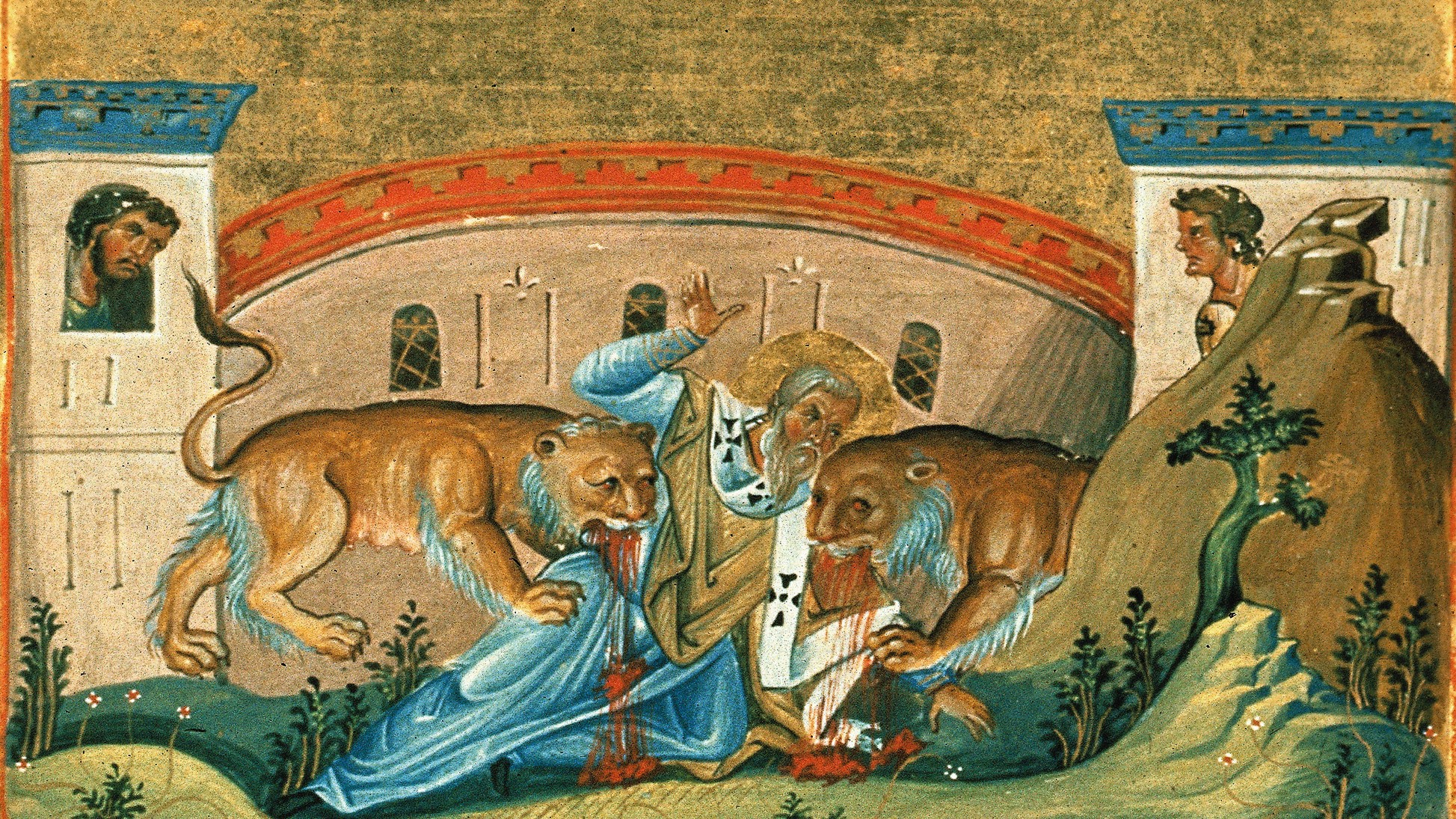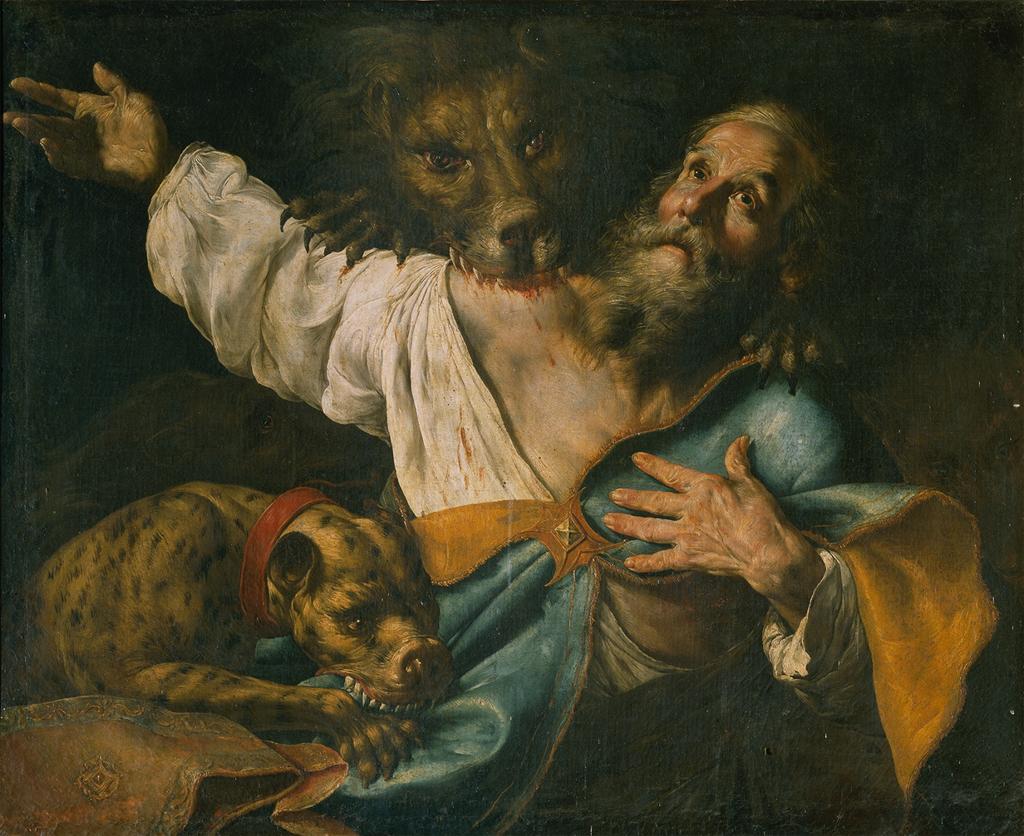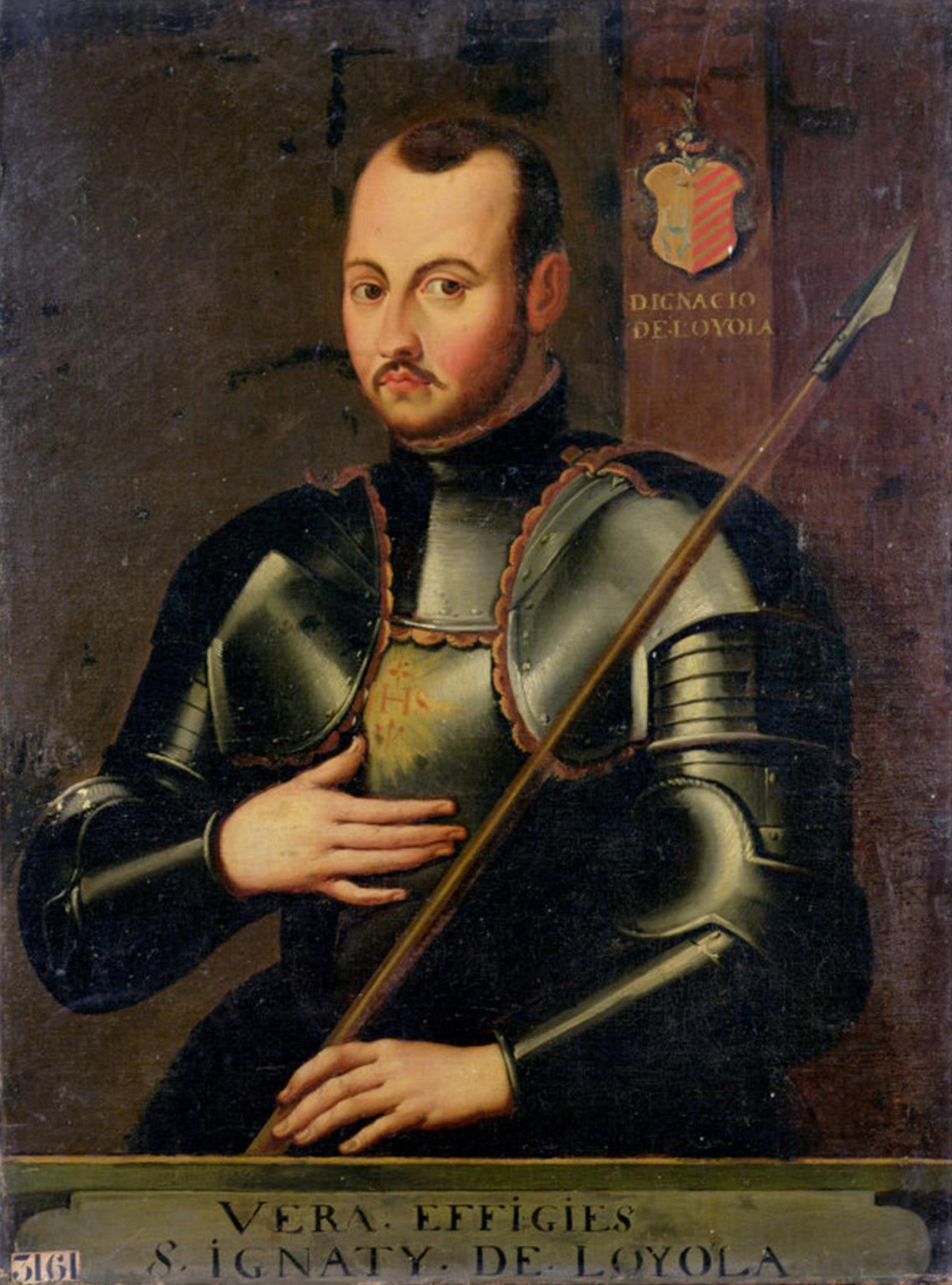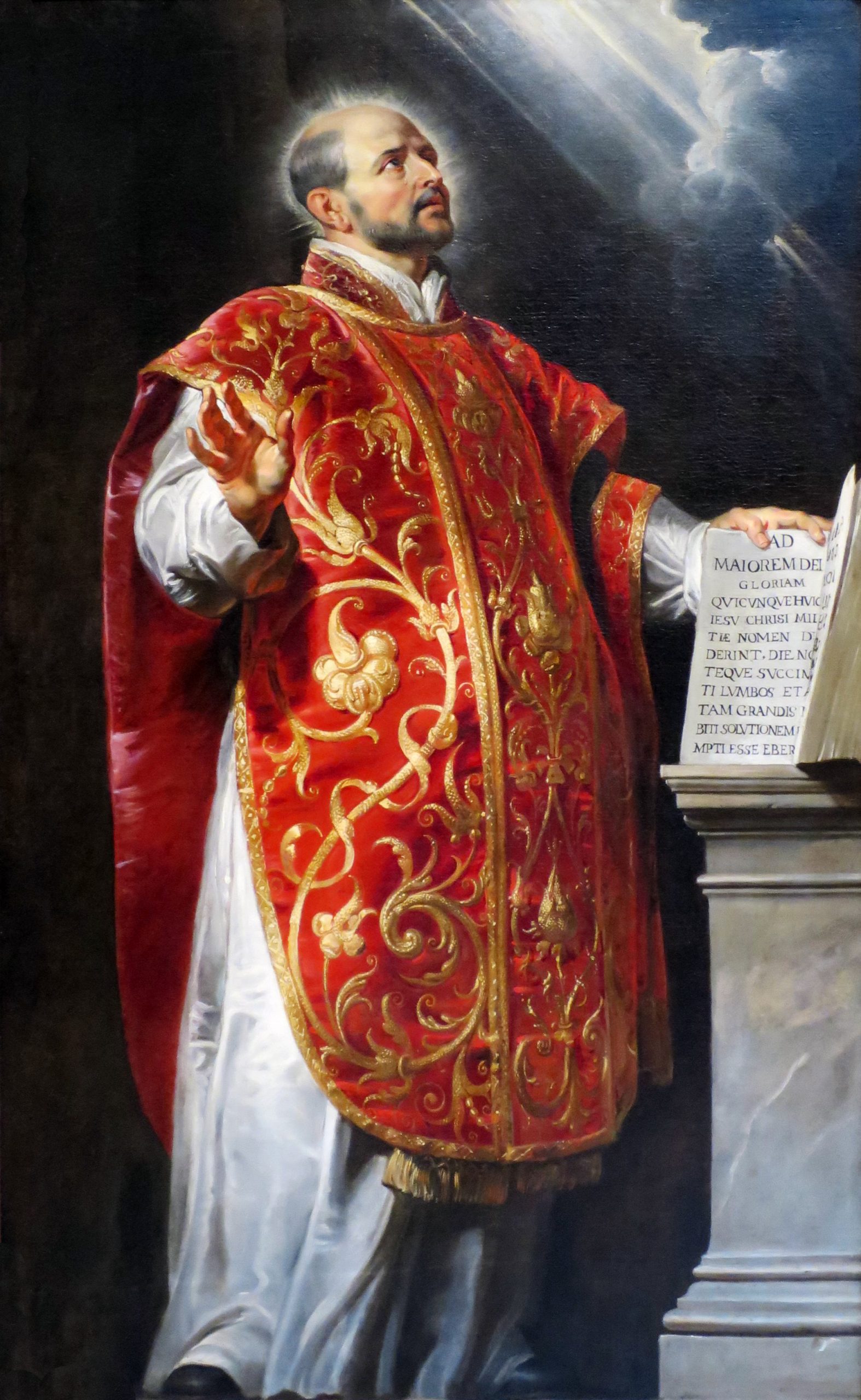Telling them apart: St. Ignatius of Antioch vs St. Ignatius of Loyola
Kristina Glicksman
Thursday, July 30, 2020

Martyrdom of St. Ignatius of Antioch, from the Menologion of Basil II, a manuscript currently in the Vatican Library. (Source: Wikimedia Commons)
Tomorrow we celebrate the feast day of St. Ignatius of Loyola, a Spanish saint who is known around the world, thanks mostly to the vast spread of his spiritual children – the Jesuits – and their role as educators, forming the minds and hearts of generations of Catholics across the globe.
But did you know that there was another, much, much older St. Ignatius? And did you know that Ignatius of Loyola’s real name wasn’t even Ignatius?
Read on to test your knowledge and find out more!

 But that all ended on May 20, 1521. During the Battle of Pamplona, a cannonball struck Íñigo in his legs, shattering his right shin. The injury required several invasive operations, and though, in this time before anaesthetics and antibiotics, he survived both the injury and the operations, he was left with a permanent limp which meant that his military career was over.
But something else happened to him at that time.
The story of Íñigo’s conversion is probably one of the most famous and inspiring conversion stories in the history of the Church. Maybe not as famous as St. Paul, but probably on the same level as that of St. Augustine or St. Francis of Assisi.
As he lay recovering from his horrific wound for many months in Loyola Castle, Íñigo still dreamed dreams of fame and glory. Needing something to occupy his time, he asked for something to read, hoping for more of the same romances and epics that had fueled his youthful ambitions. Instead he was given a popular medieval book on the life of Christ and another on the lives of the saints. And so he read them. Soon he found himself dreaming dreams of a different kind of adventure and a different kind of glory, which unlike his dreams of romantic love and earthly fame, did not fade and leave him feeling despondent when the dream was over but instead filled him with lasting peace and joy.
After he recovered, Íñigo gave up his fine clothes and his weapons and spent time in prayer, penance, and pilgrimage to the Holy Land with the same discipline and fervour he had applied to his military life. Returning to Spain, he began his education at the age of 33; however, adverse circumstances led him away from Spain to finish his studies at the University of Paris. It was around this time that he began to use the name Ignatius, which would have been more familiar to the non-Spanish Europeans among whom he was now living.
At Paris he gathered about himself a group of six young men whom he instructed in prayer and the spiritual methods he had formed for himself – his famous Spiritual Exercises. Among these young men were his first roommates, Francis Xavier and Peter Faber, who followed him not only into the religious order he founded but also into the greater order of Catholic saints.
Although, like many founders before and after him, Ignatius never intended to create a religious order, in 1540, his new association of priests dedicated to apostolic works (missionary work initially but also, later, education and social justice) was approved by Pope Paul III under the name of the Society of Jesus, and Ignatius was elected its first Superior General. A few years later, we find the term “Jesuits” used in reference to the order – a derogatory term used by the order’s critics, which was nevertheless taken up by its members, though never by Ignatius himself.
Though the other members of the order were sent out across the world in quick succession, Ignatius himself stayed in Rome for the remainder of his life. In the summer of 1556, he came down with Roman fever – as malaria was called then – and it was that illness which took his life on July 31st of that year.
Although the Society was still young at the time of Ignatius’ death, it already numbered around 1,000 members in 10 provinces. It had its ups and downs over the succeeding half a millennium, including an extensive suppression of the order in the 18th and 19th centuries. But now the Society of Jesus is the largest religious order – male or female – in the Catholic Church with over 15,000 members in 76 provinces on 6 continents. And with 827 schools in 70 countries as well as 90 colleges in 27 countries, they have played an important role in the formation of millions of Catholics (and non-Catholics) over the centuries.
How’s that for a legacy?
St. Ignatius of Loyola’s feast day is July 31.
But that all ended on May 20, 1521. During the Battle of Pamplona, a cannonball struck Íñigo in his legs, shattering his right shin. The injury required several invasive operations, and though, in this time before anaesthetics and antibiotics, he survived both the injury and the operations, he was left with a permanent limp which meant that his military career was over.
But something else happened to him at that time.
The story of Íñigo’s conversion is probably one of the most famous and inspiring conversion stories in the history of the Church. Maybe not as famous as St. Paul, but probably on the same level as that of St. Augustine or St. Francis of Assisi.
As he lay recovering from his horrific wound for many months in Loyola Castle, Íñigo still dreamed dreams of fame and glory. Needing something to occupy his time, he asked for something to read, hoping for more of the same romances and epics that had fueled his youthful ambitions. Instead he was given a popular medieval book on the life of Christ and another on the lives of the saints. And so he read them. Soon he found himself dreaming dreams of a different kind of adventure and a different kind of glory, which unlike his dreams of romantic love and earthly fame, did not fade and leave him feeling despondent when the dream was over but instead filled him with lasting peace and joy.
After he recovered, Íñigo gave up his fine clothes and his weapons and spent time in prayer, penance, and pilgrimage to the Holy Land with the same discipline and fervour he had applied to his military life. Returning to Spain, he began his education at the age of 33; however, adverse circumstances led him away from Spain to finish his studies at the University of Paris. It was around this time that he began to use the name Ignatius, which would have been more familiar to the non-Spanish Europeans among whom he was now living.
At Paris he gathered about himself a group of six young men whom he instructed in prayer and the spiritual methods he had formed for himself – his famous Spiritual Exercises. Among these young men were his first roommates, Francis Xavier and Peter Faber, who followed him not only into the religious order he founded but also into the greater order of Catholic saints.
Although, like many founders before and after him, Ignatius never intended to create a religious order, in 1540, his new association of priests dedicated to apostolic works (missionary work initially but also, later, education and social justice) was approved by Pope Paul III under the name of the Society of Jesus, and Ignatius was elected its first Superior General. A few years later, we find the term “Jesuits” used in reference to the order – a derogatory term used by the order’s critics, which was nevertheless taken up by its members, though never by Ignatius himself.
Though the other members of the order were sent out across the world in quick succession, Ignatius himself stayed in Rome for the remainder of his life. In the summer of 1556, he came down with Roman fever – as malaria was called then – and it was that illness which took his life on July 31st of that year.
Although the Society was still young at the time of Ignatius’ death, it already numbered around 1,000 members in 10 provinces. It had its ups and downs over the succeeding half a millennium, including an extensive suppression of the order in the 18th and 19th centuries. But now the Society of Jesus is the largest religious order – male or female – in the Catholic Church with over 15,000 members in 76 provinces on 6 continents. And with 827 schools in 70 countries as well as 90 colleges in 27 countries, they have played an important role in the formation of millions of Catholics (and non-Catholics) over the centuries.
How’s that for a legacy?
St. Ignatius of Loyola’s feast day is July 31.

Ignatius of Antioch (died early 2nd century AD)
This Ignatius was one of the first Bishops of Antioch, leading the nascent Christian community there in a time of persecution. But we know very little else about him except that he died in Rome, a martyr for the Christian Faith. We don’t know when or where he was born. We don’t even know exactly when he died. If you look him up online, you’ll find a variety of suggestions for the date of his martyrdom. According to tradition, he was executed during a persecution of Christians under the Roman Emperor Trajan, whose reign lasted from 98 AD to 117. So the safest estimate would put Ignatius of Antioch’s death sometime between 98 and 117 AD. But we don’t even know that with absolute certainty. Most of what we really do know about him comes from seven letters he wrote as a prisoner on his way from Antioch to Rome. And these tell us more about the Church at that time (which is really why they’re important) than they do about the man writing them. Although it would have been unusual for a Christian prisoner to have been condemned in Syria and transported to Rome for his execution and also unusual for him to have made a long, circuitous trek overland as part of his journey, that seems to be what happened in the case of Ignatius. And as he travelled through Asia Minor, he encountered groups of Christians who were eager to see him and encourage him, and he them. At Smyrna, he made a longer stopover where he spent some time with Polycarp, the local bishop, who also became a martyr at a later date. From here he wrote his letters to the Christian communities at Ephesus, Magnesia, and Tralles. He also wrote one to the Christians in Rome, who apparently felt they might be successful in getting him freed. He begged them to stop their efforts. Martyrdom was something he greatly desired. After his departure from Smyrna, he wrote a further three letters: to the communities at Philadelphia and Smyrna, and one personal one to his friend Polycarp. What is so important about Ignatius’ letters is that they contain some extremely early and rare evidence of the nature of the Church in the generation after the Apostles –in terms of both structure and teachings. If we keep in mind that the “New Testament” as such did not exist until the 4th century, then we can see that these letters are a valuable piece of our history, revealing a continuity between the Apostles and their most immediate successors, as well as the antiquity of some of our traditions which don’t necessarily appear in the Gospels or the Epistles. To give just a few examples, these letters are our earliest evidence for the use of the term “catholic” (meaning “universal”) in connection with the Church and the word “Eucharist” in reference to the Blessed Sacrament. They also show the hierarchical nature in which the authority of the bishops was understood and the primacy of the Bishop of Rome. There has been a long debate over which, if any, of Ignatius’ letters are genuine (there are six possible others) and which of the versions that have come down to us most likely gives us the original texts. (One of the fascinating – or frustrating, depending on your point of view – aspects of belonging to a Church with such a long history!) But today, most scholars agree that there are seven authentic letters written by Ignatius and that they are the versions which I have linked to above. According to Ignatius himself, he was condemned to be devoured by wild beasts, and that’s how his martyrdom was remembered in tradition and recorded by later generations. What the beasts left of him was gathered up and brought back to Antioch, but in 637, his relics returned to Rome, where they now reside in the Basilica of San Clemente, just around the corner from the Colosseum, the site – according to tradition – where he met his death. His feast day is October 17.Allow me to become food for the wild beasts, through whose instrumentality it will be granted me to attain to God. I am the wheat of God, and let me be ground by the teeth of the wild beasts, that I may be found the pure bread of Christ. – The Epistle of Ignatius to the Romans

Ignatius of Antioch, 17th century, Neapolitan School of Painting, possibly by Cesare Fracanzano (Source: Wikimedia Commons)
Ignatius of Loyola (1491-1556)
At the other end of the spectrum, in terms of how much we know about his life and the evidence for it, we have Ignatius of Loyola, famous founder of the Society of Jesus – more commonly known as the Jesuits. I was surprised to learn that his name wasn’t even Ignatius. Well, kind of – but not really. He was baptized Íñigo, and I’d always assumed that this was a Spanish version of Ignatius (along with Ignacio), but it’s not. He was named after Íñigo of Oña, an 11th-century Spanish saint, who, if you wanted to call him by his Latin name, would be St. Enecus. Ignatius was a name that Íñigo from Loyola picked up later. But let’s start at the beginning. Íñigo López de Loyola was born in the castle of Loyola in the Basque Country, the youngest of 13 children. From a young age, fed on stories of knights and chivalry, he became enamoured with military life and greatly desired fame and glory. He joined the army at the age of 17 and threw himself with zeal into the life of a well-born soldier of means – which included parties, fine clothes, women, gambling, and even a few duels.
Saint Ignatius of Loyola (1491-1556), Founder of the Jesuit Order, 16th century, by an anonymous painter of the French school (Source: Wikimedia Commons)
Ad maiorem Dei gloriam (For the greater glory of God) – motto of the Society of Jesus

Saint Ignatius of Loyola by Peter Paul Rubens (Source: Wikimedia Commons)
Related Articles:
>>
SUPPORT LABEL
$50
$100
$150
$250
OTHER AMOUNT
DONATE
Receive our newsletters
Stay Connected
Receive our newsletters
Stay Connected













